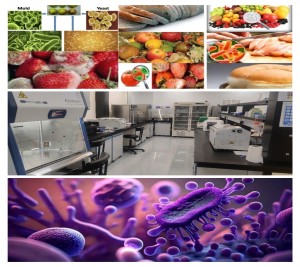
The Hidden Dangers-Microbial Contamination: Understanding the Risks and Testing Strategies
Microbial contamination in food and water presents serious threats to human health, leading to foodborne illnesses and waterborne diseases. To ensure safety and prevent outbreaks, effective testing and identification methods are essential. Here we would like to share the various techniques and strategies for detecting microbial contaminants in food and water. Microbial contamination can arise from bacteria, viruses, fungi, or parasites. Notable contaminants include Salmonella, Listeria, E. coli, Legionella, norovirus, rotavirus, Aspergillus, Giardia etc. Recognizing the types of contaminants is vital for choosing appropriate testing methods. Traditional culture techniques involve cultivating microorganisms in a controlled setting. Common practices include plate counts, enrichment broths, and selective agar. While these methods are dependable, they can be time-consuming, often requiring days to yield results.
In contrast, rapid detection methods such as PCR (Polymerase Chain Reaction), qPCR, and DNA sequencing provide quicker outcomes, typically within 1-6 hours. These techniques focus on identifying specific genetic material, which helps minimize false positives and negatives. Immunological techniques, including ELISA (Enzyme-Linked Immunosorbent Assay) are designed to detect specific antibodies or antigens. These methods are both rapid and sensitive, although they may necessitate specialized equipment. Biochemical tests, such as API (Analytical Profile Index) and Biolog, identify microorganisms based on their metabolic characteristics. These tests are particularly useful for identifying unknown microorganisms. Machines such as VITEK are fully automated to carry out bacterial identification, antibiotic susceptibility testing, resistance mechanism detection, and epidemiological trending and reporting. Food testing requires careful sampling and preparation, considering factors such as the food matrix and regulatory standards. Guidelines from organizations like the GSO, WHO, USDA, FDA, and ISO provide essential frameworks for testing procedures. Water testing encompasses the collection and examination of samples to evaluate various water quality parameters, including but not limited to pH, temperature, turbidity, and microbial indicators. Regular testing is essential for ensuring the safety of drinking water, wastewater, and recreational water sources. Identification methods encompass microscopic analysis, biochemical assays, and molecular techniques. Accurate identification is achieved through RNA sequencing and DNA fingerprinting. Innovative technologies, including Next-Generation Sequencing (NGS), nanotechnology, and Artificial Intelligence (AI), enhance detection and prevention capabilities. NGS facilitates whole-genome sequencing and metagenomic analysis. However, testing and identification encounter obstacles such as sampling and detection limitations, matrix interference, and regulatory challenges. It is crucial to standardize and harmonize procedures to guarantee reliable results. Fujairah Research Center can proficiently assess and detect microbial contamination in food, water, and a range of products, leveraging a comprehensive knowledge of both conventional and rapid detection methods, as well as sampling techniques that comply with relevant regulatory standards. By embracing innovative technologies and addressing current challenges, we aim to enhance the safety of food and water for the benefit of public health.
